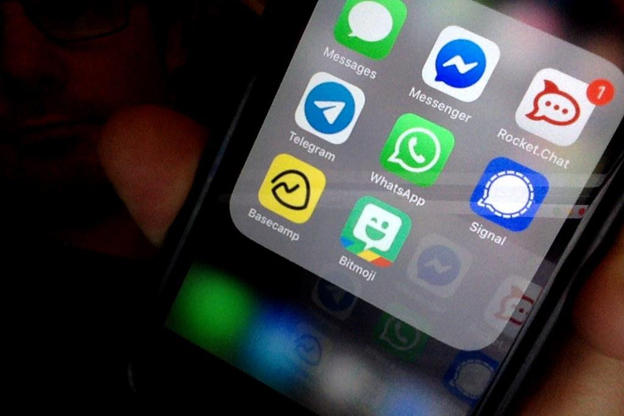
AI seems ubiquitous. Let’s take a look at the most innovative AI features being added to your favorite chat apps.
Even though most of us have been using the same apps for years, there are plenty of little innovations that are constantly being introduced to your favorite apps. Usually these are not that revolutionary and only involve minor adjustments. However, this could change with the rise of AI. Following Google, WhatsApp and Messages are now also starting to offer automatic transcriptions. AI is also used in several other ways in many different apps.
Let’s take a look at the most innovative AI features being added to your favorite communications apps.
WhatsApp and Messages (iOS): speech to text using AI
WhatsApp and Messages will soon offer the option to convert voice messages into text, using AI.
Audio message transcription is a feature that has long been available on Google’s Pixel phones, and now it’s coming to iPhone. Audio message transcription in iOS 18 automatically converts audio messages to text, making it easier for users to read and understand voice messages without having to listen to them.
This is especially beneficial for accessibility, as it allows those who prefer or need to send voice messages to communicate effectively with those who find it difficult to listen to them. The transcription provides an instant summary of the message, improving the overall messaging experience.
According to a report by WABetaInfo, the new beta version of WhatsApp also introduces a feature that provides transcriptions for WhatsApp voice messages. When you update to this beta version, you may see a pop-up confirming the availability of these transcripts. When launching the app after the update, you will need to download a language pack or voice message transcription to enable this feature. Currently it supports five languages: English, Spanish, Portuguese, Russian and Hindi.
Snapchat: My AI
AI is probably most integrated into Snapchat with its own AI assistant, My AI, reminiscent of Gemini or ChatGPT. Users can use My AI to answer questions and generate content, but the assistant is also increasingly acting as a personal helper. For example, you can ask My AI to set a reminder or alarm for you.
My AI also offers the option to invite a friend to have a conversation with the AI together.
It’s clear that Snapchat is experimenting with this, and we expect them to find more and more innovative uses for their AI.
TikTok: numerous AI applications
TikTok may not strictly be a chat app, but it does offer a chat feature and makes extensive use of AI applications. Much of the content on the platform is AI-generated or modified. Think of the robot voices that you increasingly hear in videos, the various face apps that distort your face and even entire videos that are generated by a program.
In addition, TikTok has its own chatbot called Tako, which is mainly designed for relaxation and entertainment. Tako uses artificial intelligence to understand user preferences and provide personalized recommendations. By analyzing user behavior, Tako can suggest relevant content, music, filters and effects, tailoring the TikTok experience to individual interests.
Telegram and Twitter/X: bots
Telegram and Twitter (now known as X) both have long and sometimes controversial histories of bot use, sometimes for informational or recreational purposes, but often involving spam.
Nowadays, these bots are becoming more and more sophisticated. With the integration of AI apps like ChatGPT, ChatInsight AI and Crypto Bot, bots can do much more than before.
Bots on both platforms can automatically post tweets, update news, and even engage with users to serve them. As a result, some bots have much better functionality than the spambots that many users have encountered in the past.
Meta AI: AI for Instagram, WhatsApp and Messenger
Of course, Meta could not stay behind in the AI hype. Their Meta AI assistant offers similar functions within almost all apps. It works primarily as an assistant. Within the chat, users can ask the AI for suggestions, help making plans, and it can do research. It also works within an existing chat, so that both conversation partners can see the answer.
It works to generate images, and it is also applied to the Facebook feed, for example to look up more information about a particular post.
This AI was only rolled out in April 2024, so it is still partly in an experimental phase. However, as a Facebook, WhatsApp or Messenger user, expect to see a lot more of it in the future.
Improved usability
Although AI is of course always in the news, almost all tech companies are doing everything they can to improve their user-friendliness. Adding AI and all kinds of gadgets can increase the appeal of a particular platform. However, it goes without saying that it must first and foremost be functional and convenient for the user.
For example, platforms like Facebook and Instagram use AI-driven algorithms to deliver personalized content and ads, making the user experience more engaging and relevant.
In the realm of digital gaming, improvements in UI and UX have revolutionized the way gamers interact with their favorite games. Platforms like LeoVegas offer intuitive interfaces and personalized game recommendations, making for a pleasant user experience.
What will our favorite communication apps look like in 2030?
In recent years we have seen significant improvements in the functionalities of our favorite chat apps WhatsApp, iMessage and Snapchat. With the rise of AI, there are many exciting possibilities for the future of communication apps.
It is of course difficult to predict which applications will be devised for chat apps in the coming decade. However, one thing is already certain: we expect more and more AI in all our chat conversations.
Since most modern devices will have a custom chipset designed to support AI applications, this could accelerate.
This article was produced in collaboration with leovegas.nl

Photo of chat apps on a smartphone